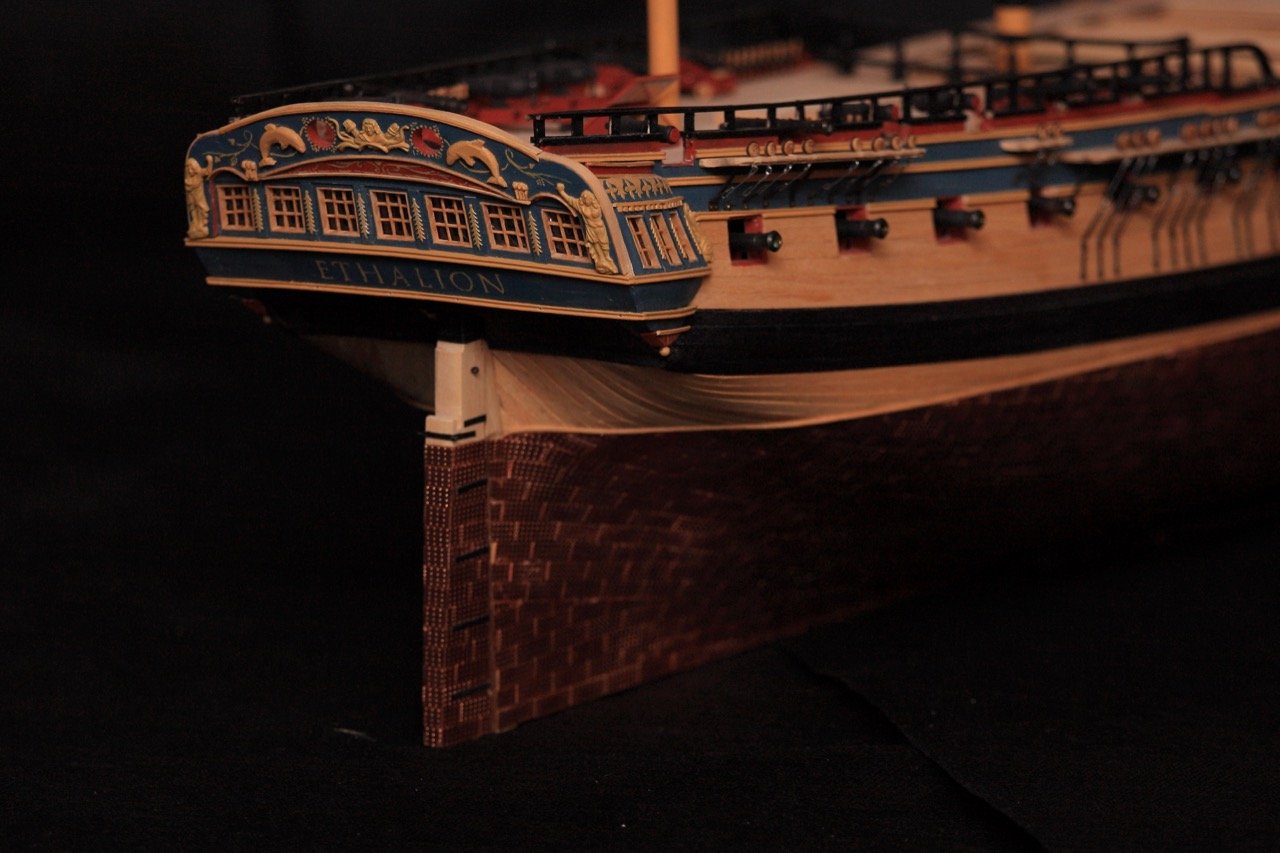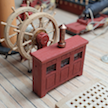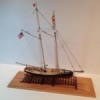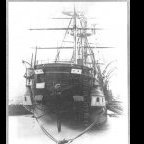MORE HANDBOOKS ARE ON THEIR WAY! We will let you know when they get here.
×
-
Posts
841 -
Joined
-
Last visited
Reputation Activity
-
 robdurant reacted to scrubbyj427 in HMS Portland 1770 by scrubbyj427 - 1:48 - 4th rate 50-gun ship
robdurant reacted to scrubbyj427 in HMS Portland 1770 by scrubbyj427 - 1:48 - 4th rate 50-gun ship
Some small progress on the QG today. Spent most time designing parts and printing trial and error. Oh and whatever this resin is, it’s absolutely best friends with CA and believe it or not… Tightbond. There will be zero issues attaching things to these and then to the hull.
-
 robdurant reacted to scrubbyj427 in HMS Portland 1770 by scrubbyj427 - 1:48 - 4th rate 50-gun ship
robdurant reacted to scrubbyj427 in HMS Portland 1770 by scrubbyj427 - 1:48 - 4th rate 50-gun ship
Some very preliminary QG work done tonight. Lots of boxwood had to die for this to happen. New revised windows on an old prototype QG, some messed up columns and oversized moldings. But you get the idea. There’s still much more to these things but this is the basic idea.
-
 robdurant got a reaction from Jimbo1963 in NORDKAP 476 by _SalD_ - Billing Boats - 1:50 - RADIO
robdurant got a reaction from Jimbo1963 in NORDKAP 476 by _SalD_ - Billing Boats - 1:50 - RADIO
When I (briefly) sailed a One Metre class yacht, the 2.4GHz receiver was just sat in a plastic pot along with the battery just beneath the deck, and it worked fine. That was a fibreglass hull and deck (albeit with patches). The orientation shouldn't make any difference unless you're pushing the signal to its limits, as I guess it changes relatively anyway as you move the transmitter around, and as the boat sails in different directions.
The one article I found about this (again from a radio sailing perspective) talks about having problems at a distance of 180 metres because of a carbon fibre hull and rain reducing the signal strength.... so that gives you some idea of the capabilities of modern radio control transmitters and receivers. (Here, if you want to go down the rabbit hole... https://www.onemetre.net/Build/2.4GHz/24GHz.htm )
-
 robdurant got a reaction from Jimbo1963 in NORDKAP 476 by _SalD_ - Billing Boats - 1:50 - RADIO
robdurant got a reaction from Jimbo1963 in NORDKAP 476 by _SalD_ - Billing Boats - 1:50 - RADIO
Nordkap's looking wonderful. The paint looks just right to me.
I think the idea with the antenna is to keep it above the waterline, and away from things that are electronically noisy (I.e. the motor)... Since the boat is not carbon fibre it shouldn't make a Faraday cage, so you should be okay having the antenna inside the model, and unless you have to I would advise not changing the antenna wire unless you have to. I believe they are matched by length to the frequency.
I have always just had the receiver in a tray up towards the deck away from the motor and rudder servo. Having said that I have more experience with 27Mhz and 40MHz... my tests with 2.4GHz seem okay though.
A distance test is always a good idea... plug everything in, connect transmitter to receiver, and then get someone to watch the bost while you walk away from it using the transmitter. See how far you get before it stops responding. It'll give you some idea what to expect on the water.
Also, doing a first sail (or indeed sailing in general) somewhere where you can wade out and retrieve the model is a great comfort.
Hope that's helpful, and apologies if I'm repeating things you already know.
Rob
-
 robdurant got a reaction from Jimbo1963 in NORDKAP 476 by _SalD_ - Billing Boats - 1:50 - RADIO
robdurant got a reaction from Jimbo1963 in NORDKAP 476 by _SalD_ - Billing Boats - 1:50 - RADIO
Aah, you've nailed the bit that completely stumped me. That blue colour. I searched and searched and was never really happy with my choice. Your pick looks just right.
-
 robdurant got a reaction from Jimbo1963 in NORDKAP 476 by _SalD_ - Billing Boats - 1:50 - RADIO
robdurant got a reaction from Jimbo1963 in NORDKAP 476 by _SalD_ - Billing Boats - 1:50 - RADIO
Looking great, Sal. Do think about access to the top of the rudder post once fitted, too. I cut an extra hatch in, which ends up hidden under the superstructure. It will allow you to attach the rudder horn (tiller effectively) easily when you get to that stage. You can see it at the stern in the photo attached... the hole is much more easily cut out before the false deckis attached, and you may decide to modify the frames around that part, too so that you get a good run for the arm between the rudder horn and the servo . I can't remember if I had to.
Apologies if I'm teaching granny to suck eggs
Rob
-
 robdurant got a reaction from _SalD_ in NORDKAP 476 by _SalD_ - Billing Boats - 1:50 - RADIO
robdurant got a reaction from _SalD_ in NORDKAP 476 by _SalD_ - Billing Boats - 1:50 - RADIO
When I (briefly) sailed a One Metre class yacht, the 2.4GHz receiver was just sat in a plastic pot along with the battery just beneath the deck, and it worked fine. That was a fibreglass hull and deck (albeit with patches). The orientation shouldn't make any difference unless you're pushing the signal to its limits, as I guess it changes relatively anyway as you move the transmitter around, and as the boat sails in different directions.
The one article I found about this (again from a radio sailing perspective) talks about having problems at a distance of 180 metres because of a carbon fibre hull and rain reducing the signal strength.... so that gives you some idea of the capabilities of modern radio control transmitters and receivers. (Here, if you want to go down the rabbit hole... https://www.onemetre.net/Build/2.4GHz/24GHz.htm )
-
 robdurant reacted to _SalD_ in NORDKAP 476 by _SalD_ - Billing Boats - 1:50 - RADIO
robdurant reacted to _SalD_ in NORDKAP 476 by _SalD_ - Billing Boats - 1:50 - RADIO
Thanks for the advice, Rob — and no need to apologize. I can use all the help I can get when it comes to electronics! As for changing out the antenna, that's definitely way above my pay grade.
So, you think I can keep the antenna inside the cabin? I was under the impression I needed to run it up through the cabin roof and keep it vertical, kind of like a car radio antenna (not that cars really have those anymore).
Good advice, I will definitely do that before putting it in the water.
-
 robdurant got a reaction from _SalD_ in NORDKAP 476 by _SalD_ - Billing Boats - 1:50 - RADIO
robdurant got a reaction from _SalD_ in NORDKAP 476 by _SalD_ - Billing Boats - 1:50 - RADIO
Nordkap's looking wonderful. The paint looks just right to me.
I think the idea with the antenna is to keep it above the waterline, and away from things that are electronically noisy (I.e. the motor)... Since the boat is not carbon fibre it shouldn't make a Faraday cage, so you should be okay having the antenna inside the model, and unless you have to I would advise not changing the antenna wire unless you have to. I believe they are matched by length to the frequency.
I have always just had the receiver in a tray up towards the deck away from the motor and rudder servo. Having said that I have more experience with 27Mhz and 40MHz... my tests with 2.4GHz seem okay though.
A distance test is always a good idea... plug everything in, connect transmitter to receiver, and then get someone to watch the bost while you walk away from it using the transmitter. See how far you get before it stops responding. It'll give you some idea what to expect on the water.
Also, doing a first sail (or indeed sailing in general) somewhere where you can wade out and retrieve the model is a great comfort.
Hope that's helpful, and apologies if I'm repeating things you already know.
Rob
-
 robdurant reacted to _SalD_ in NORDKAP 476 by _SalD_ - Billing Boats - 1:50 - RADIO
robdurant reacted to _SalD_ in NORDKAP 476 by _SalD_ - Billing Boats - 1:50 - RADIO
I finished painting the hull, applying the blue paint above the waterline.
Once the paint had dried, I proceeded to install all the electronics along with the propeller. The only thing I'm still unsure about is what to do with the antenna and how to support it.
Thanks for looking in and for the likes.
-
 robdurant reacted to _SalD_ in NORDKAP 476 by _SalD_ - Billing Boats - 1:50 - RADIO
robdurant reacted to _SalD_ in NORDKAP 476 by _SalD_ - Billing Boats - 1:50 - RADIO
Thanks, Rob! To be honest, I have to give all the credit to my wife—she asked ChatGPT what color would best match the Nordkap fishing vessel, and this is what it came up with.
Just remember, always be nice to AI so when it takes over the world it will be nice to you.😄
-
 robdurant got a reaction from _SalD_ in NORDKAP 476 by _SalD_ - Billing Boats - 1:50 - RADIO
robdurant got a reaction from _SalD_ in NORDKAP 476 by _SalD_ - Billing Boats - 1:50 - RADIO
Aah, you've nailed the bit that completely stumped me. That blue colour. I searched and searched and was never really happy with my choice. Your pick looks just right.
-
 robdurant got a reaction from king derelict in NORDKAP 476 by _SalD_ - Billing Boats - 1:50 - RADIO
robdurant got a reaction from king derelict in NORDKAP 476 by _SalD_ - Billing Boats - 1:50 - RADIO
Aah, you've nailed the bit that completely stumped me. That blue colour. I searched and searched and was never really happy with my choice. Your pick looks just right.
-
 robdurant reacted to chris watton in Chris Watton and Vanguard Models news and updates Volume 2
robdurant reacted to chris watton in Chris Watton and Vanguard Models news and updates Volume 2
And here is the full scene, Aubrey, Maturin, table with candles and music note stand - standard in all Surprise kits.
-
 robdurant got a reaction from MattHoward in New to Forum and Hobby
robdurant got a reaction from MattHoward in New to Forum and Hobby
Hi Matt,
It's a lovely model my dad built a version of Mary Ann (the same hull shape as the krabbenkutter / cux87 etc...) in the 1970s and it has a very different hull shape to the model you have here. It has a rounded stern and more curved run of the deck and a smooth curve cross section from deck to keel.
I wonder whether this model has a scratch built superstructure? It was certainly built by someone who gave it a lot of love, care and attention, and was confident and able from all I can see.
I have also finished building the hull of nordkap myself, and again the hull is much more curved at the stern, with a pronounced covered deck at the front.
Looking at your model it has a chine hull, with the "creases" running down the sides. More like the Kadet and White Star hulls made by billing boats, although these were plastic hulls as I recall. Indeed if you built up the deck edge walls (bulwarks) you might end up with something similar in shape to your model. That's as much as I can tell you, I'm afraid. But congratulations on a lovely model!
The other possibility may be that this is a model of a billings bay shuttle (I.e. Billings as a place name - see https://www.knowbc.com/limited/Books/Encyclopedia-of-BC/B/Billings-Bay ), but it is entirely designed and made by the original owner (i.e. not a kit at all). In that case, you've ended up with a lovely model that is entirely unique.
Was there a particular reason you were looking for parts?
Hope that helps
Rob
-
 robdurant got a reaction from Keith Black in New to Forum and Hobby
robdurant got a reaction from Keith Black in New to Forum and Hobby
Hi Matt,
It's a lovely model my dad built a version of Mary Ann (the same hull shape as the krabbenkutter / cux87 etc...) in the 1970s and it has a very different hull shape to the model you have here. It has a rounded stern and more curved run of the deck and a smooth curve cross section from deck to keel.
I wonder whether this model has a scratch built superstructure? It was certainly built by someone who gave it a lot of love, care and attention, and was confident and able from all I can see.
I have also finished building the hull of nordkap myself, and again the hull is much more curved at the stern, with a pronounced covered deck at the front.
Looking at your model it has a chine hull, with the "creases" running down the sides. More like the Kadet and White Star hulls made by billing boats, although these were plastic hulls as I recall. Indeed if you built up the deck edge walls (bulwarks) you might end up with something similar in shape to your model. That's as much as I can tell you, I'm afraid. But congratulations on a lovely model!
The other possibility may be that this is a model of a billings bay shuttle (I.e. Billings as a place name - see https://www.knowbc.com/limited/Books/Encyclopedia-of-BC/B/Billings-Bay ), but it is entirely designed and made by the original owner (i.e. not a kit at all). In that case, you've ended up with a lovely model that is entirely unique.
Was there a particular reason you were looking for parts?
Hope that helps
Rob
-
 robdurant reacted to _SalD_ in NORDKAP 476 by _SalD_ - Billing Boats - 1:50 - RADIO
robdurant reacted to _SalD_ in NORDKAP 476 by _SalD_ - Billing Boats - 1:50 - RADIO
Rudder and prime coat
I permanently installed the rudder so I could begin painting the hull. To ensure the rudder straps stayed securely in place, I added some “rivets” through the straps before epoxying them to the rudder post.
The hull, superstructure, and stand were all primed. I chose to use white primer since the final color scheme includes a lot of white.
-
 robdurant reacted to _SalD_ in NORDKAP 476 by _SalD_ - Billing Boats - 1:50 - RADIO
robdurant reacted to _SalD_ in NORDKAP 476 by _SalD_ - Billing Boats - 1:50 - RADIO
Bow Deck and Pilot House Superstructure
Construction of the bow deck began by gluing together the partition pieces that form a faux interior at the bow. The roof support frames for the bow deck were also glued in place at this stage.
Next, the deck and side pieces were attached. The frames and deck sides required a fair amount of sanding to ensure a proper fit. I’d also like to thank robdurant for mentioning in his build log that the holes on the deck are not symmetrical to the centerline—catching this early made it much easier to correct before installing the deck.
Finished deck; after some wood filler and sanding.
The pilot house assembly went together fairly smoothly, with no major issues once I figured out the placement of all the parts.
Lower superstructure
Upper pilot house
So far so good.
-
 robdurant reacted to Javelin in Chaconia by Javelin - 1/100 - RADIO - LPG Tanker
robdurant reacted to Javelin in Chaconia by Javelin - 1/100 - RADIO - LPG Tanker
First I finished that forecastle by adding the bosun store hatch and associated davit. For the davit handling rope I used normal orange sewing thread to replicate the commonly used orange polypropyle rope.
The experience of actually finishing an area was quite addictive, so I decided to move just aft of the forecastle and finish that area first.
Truly finishing it, also means creating the stairs, a task I'm not looking forward to. There is really a huge amount of stairs on this vessel and all are different.
I was planning to leave them for last, but I believe this may have resulted in me not making them at all or ending up with a builder's block.
So now on to the forward part of the deck, where I just installed the catwalk.
First stair steps. I made a new jig for the steps.
I already produced a lot of steps for the future as well.
Then they go in the jig.
And once we have a stair, I produce the handrails, also with a jig. This jig has both sides of the rails, but the length is not fixed. So I make the sharp end (upper)first, the check the required length with the stair. Then I mark it and form the blunt (lower) end of the rail.
There are 4 long and 2 short stairs on the part in front of the deck house. Here is the forward most stair. You can also see part of the railing on deck level that goes from that stair to the forecastle stair. This is another part of the "safe acces to tanker bows" as required by regulations.
And here is one of my secret weapons:
I use a lot of these free paper measuring tapes from Ikea and other shops. Their flexibility comes in handy, from time to time I also cut them in smaller pieces for easier use.
-
 robdurant reacted to Jack H in HMS Cumberland 1774 by Jack H - 1:36 &1:48 - POF - kit development for True Image Models
robdurant reacted to Jack H in HMS Cumberland 1774 by Jack H - 1:36 &1:48 - POF - kit development for True Image Models
To better fit the structure of the kit, I have modified the fashion pieces jig and adopted a composite structure of plywood and 3D printing.The 3D-printed structure can well match the curvature of the frame's outer surface i think. Today, I have sent the complete set of frame jig to Liu, and he will provide his usage experience soon.
-
 robdurant reacted to chris watton in Chris Watton and Vanguard Models news and updates Volume 2
robdurant reacted to chris watton in Chris Watton and Vanguard Models news and updates Volume 2
I am very happy to tell you that igorcap (igorcap - Model Ship World™) is now my digital carver. Igor has already done the lower quarter drop for Surprise for me, and his first main project for me will be the decoration for my next development, Agamemnon.
Thank you, Igor!
-
 robdurant reacted to _SalD_ in NORDKAP 476 by _SalD_ - Billing Boats - 1:50 - RADIO
robdurant reacted to _SalD_ in NORDKAP 476 by _SalD_ - Billing Boats - 1:50 - RADIO
Thanks Rob appreciate the kind words.
I apologize for the length of this post but my actual progress is a bit ahead of my updates so I thought I'd try to catch up. I also want to say that this kit is not for the faint of heart. Honestly, it feels like someone tossed a bunch of parts into a box, slapped a picture of a boat on it, and the instructions basically say, “Here, build this.”
That said, it took me a while to figure out which parts needed to come together first. So let’s start with the easy stuff.
Deck-Top Fish Bin
This one was pretty straightforward. No major issues there.
Ship’s Stand
The stand came next. The instructions provided a few basic dimensions, but not quite enough to properly place all the support members. I ended up building the base first, then positioning it directly over the hull to figure out the correct length for the uprights.
Anchorways
Now here’s where things got tricky. Don’t mix up the side pieces—they might look the same, but they’re not. One side is slightly larger than the other. I didn’t catch this until after assembling one of them, which caused a bit of backtracking and I’m still not 100% sure I have these right. After cutting them into the hull a little wood filler was used to fill the gaps.
Interior Bulwarks
I wasn’t happy with the look of the interior bulwarks above the deck because of the exposed planking lines and glue marks. It just didn’t resemble a steel-sided ship and I wasn't sure if just painting the sides would cover everything. To fix this, I cut and installed 1/16” thick birch sheets between the bulkheads to cover the planking.
Scrubbers and hull stiffening
After that, I moved on to cutting in the scrubbers and attaching what I assume is some kind of hull stiffing on the outside of the hull.
Thanks for reading this far and for all the likes.
-
 robdurant got a reaction from _SalD_ in NORDKAP 476 by _SalD_ - Billing Boats - 1:50 - RADIO
robdurant got a reaction from _SalD_ in NORDKAP 476 by _SalD_ - Billing Boats - 1:50 - RADIO
Brilliant stuff! Great to see you making such good progress.
-
 robdurant got a reaction from king derelict in NORDKAP 476 by _SalD_ - Billing Boats - 1:50 - RADIO
robdurant got a reaction from king derelict in NORDKAP 476 by _SalD_ - Billing Boats - 1:50 - RADIO
Brilliant stuff! Great to see you making such good progress.
-
 robdurant reacted to _SalD_ in NORDKAP 476 by _SalD_ - Billing Boats - 1:50 - RADIO
robdurant reacted to _SalD_ in NORDKAP 476 by _SalD_ - Billing Boats - 1:50 - RADIO
Waterproofing the Hull
After completing the sanding of the hull, I was ready to try something I had never done before on one of my ships—waterproofing the hull. After studying roddurant’s build log, I decided to use Eze-Kote Finishing Resin by Deluxe, along with Deluxe Materials Super Lightweight Fiberglass Cloth (1.0 oz).
My first step was to apply two coats of Eze-Kote to the hull, sanding between coats with 300-grit sandpaper. The resin is pleasant to work with—no odor, it goes on easily and cleans up quickly with water.
Next, I positioned the fiberglass cloth on the hull, working on one side at a time. I applied the Eze-Kote using a one-inch-wide paintbrush, working the resin into the cloth starting at the keel center and moving outward toward the stem and stern. After allowing the resin to dry overnight, I trimmed the excess cloth and repeated the process on the other side. Cleaning my basement hence all the 'priceless' junk on my work table.
Once both sides were glassed and trimmed, I applied two additional coats of Eze-Kote over the fiberglass, again sanding between coats with 300-grit paper. I also applied a single coat of resin to the interior of the hull—at least in the areas I could reach. Then came the big test! I inserted the prop and rudder post and...
IT FLOATS. No runs, no drips no errors, as they say.




